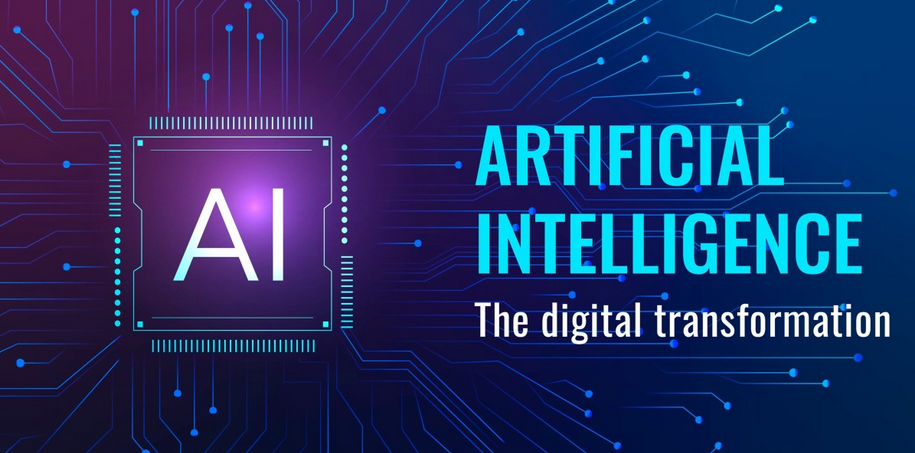Now we will talk about the Salesforce technical architecture.
Salesforce is a multi-tenant cloud platform. Heroku is the cloud platform as a service that is powering Salesforce.
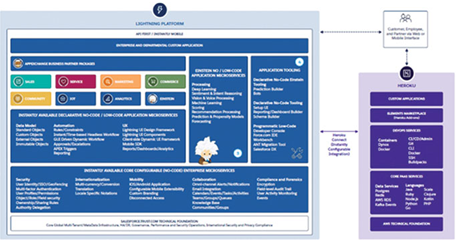
Figure 1.8: Salesforce architecture diagram-source (https://www.salesforce.com/eu/products/platform/architecture/ )
As you can see in the diagram, there are two main blocks. One is the Salesforce lightning platform, which we will refer to as the core Salesforce platform and the second block is the Heroku platform which is a PaaS (Platform as a Service) offering from Salesforce. The two integrate seamlessly with Heroku Connect. The lightning platform is an API and mobile-first platform. It is where the bulk of the Salesforce features are available.
Let us break up the Salesforce architecture into six parts:
Part 1: The first part is the instantly available core configurable (No-Code) Enterprise microservices. You start building with a fully secure platform filled with microservices and mobility.

Figure 1.9: Enterprise Microservices
The Salesforce platform is highly configurable with no-code tools as well as with custom code. Let’s talk more about the no-code tools. Later, we will discuss how we can customize Salesforce using code.
The core configurable enterprise microservices are divided into five parts:
- Security: It supports User Identity management, Single sign-on, Geofencing, MFA, User profiles, permissions, and so on
- Internalization: Supports multi-currency, translation, and locale-specific notations
- Mobility: Supports mobile-first apps
- Collaboration: Supports various tools to help teams collaborate on Salesforce
- Compliance and Forensics: Supports data encryption, audit logs, change management, user activity monitoring, and so on
Part 2: The second part is Salesforce Clouds and AppExchange partners. You can build on the core Salesforce applications, utilities, and business domain packages.

Figure 1.10: Salesforce Clouds and AppExchange packages
On the top of the preceding diagram, you can see the different cloud solutions provided by Salesforce, namely Sales, Service, Marketing, Commerce, Community (now called Experience), IOT, Analytics, and Einstein cloud. These offerings provide out of the box solutions for companies using the plug-and-play model. Several business use cases are solved by out-of-the-box solutions.
Salesforce AppExchange is a platform where one can find applications for various business needs which are not present in the core Salesforce platform, as well as consultants who can help you to implement and get the most out of your Salesforce application. You can install any of the Salesforce AppExchange packages to solve specific business needs.
These core offerings are supported by the declarative No-code/ Low-code application microservices.

Figure 1.11: No-code/Low-code application microservices
To customize Salesforce to solve specific business use cases, Salesforce provides low-code/no-code solutions. There are three parts:
- Data Model: We will discuss the data model later. For now, it is important to note that you can create custom objects, external objects, and immutable objects, apart from the existing standard objects, to meet your business use cases.
- Automation: Salesforce provides many automation tools to improve the productivity of users. Process automation can be built without the need for extensive coding.
- UX: Salesforce provides tools to make changes to the UI using No-code/Low-code. It provides Lightning UI framework, UI components, and mobile SDK, among others to improve the UX.
Part 3: Use AI to build intelligent automation powered by Salesforce Einstein
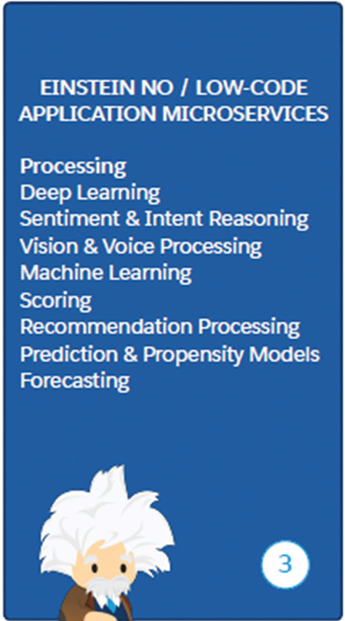
Figure 1.12: Einstein No/low-code services
Salesforce provides machine learning and citizen data science tools to help make intelligent decisions based on Salesforce data through Salesforce Einstein. Einstein tools make it easy for business users to perform machine learning and data science using only clicks and no code. This reduces the dependency a business user will have on a machine learning engineer or a data engineer or a data analyst. Einstein provides:
- Processing
- Deep Learning
- Sentiment and Intent Reasoning
- Vision and voice processing
- Machine Learning
- Lead Scoring
- Forecasting
- Recommendation processing
Part 4: Application Tooling- Utilize a full suite of development tools for both declarative no-code as well as low-code development.
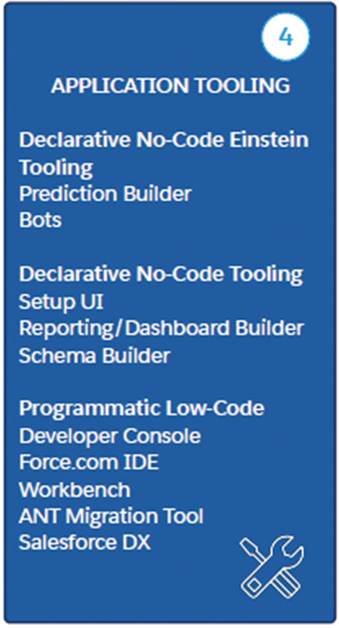
Figure 1.13: Application Tooling
Salesforce provides the following to build on the Salesforce platform:
- No code Data science tools
- Prediction builder
- No code Einstein bots
- Setup UI
- Reporting/Dashboard Builder
- Schema Builder
- Developer Console
- Force.com IDE
- Workbench
- ANT migration tool
- Salesforce DX
Part 5: PaaS-based Applications- Salesforce provides users with Heroku which is a platform as a Service application.
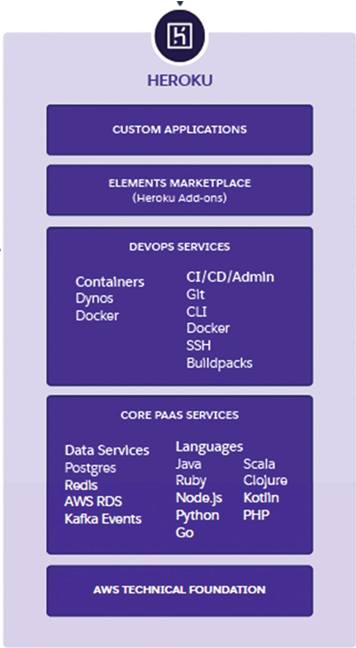
Figure 1.14: PaaS-based Applications
You can design your own application and even sell your applications by becoming an AppExchange partner. Build enterprise-grade secure applications with Salesforce which provide:
- Custom Applications
- Elements marketplace
- DevOps services
- Core PaaS Services
- AWS technical foundation
Part 6: Connection between Heroku and Core Salesforce platform
Salesforce provides instantly configurable integration between the lightning platform and the Heroku platform so that you can leverage the data irrespective of its location. You can maximize programming models for maximum efficiency and agility without integration.

